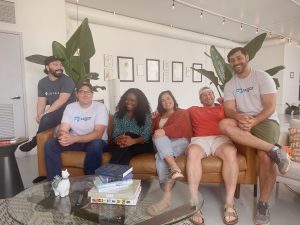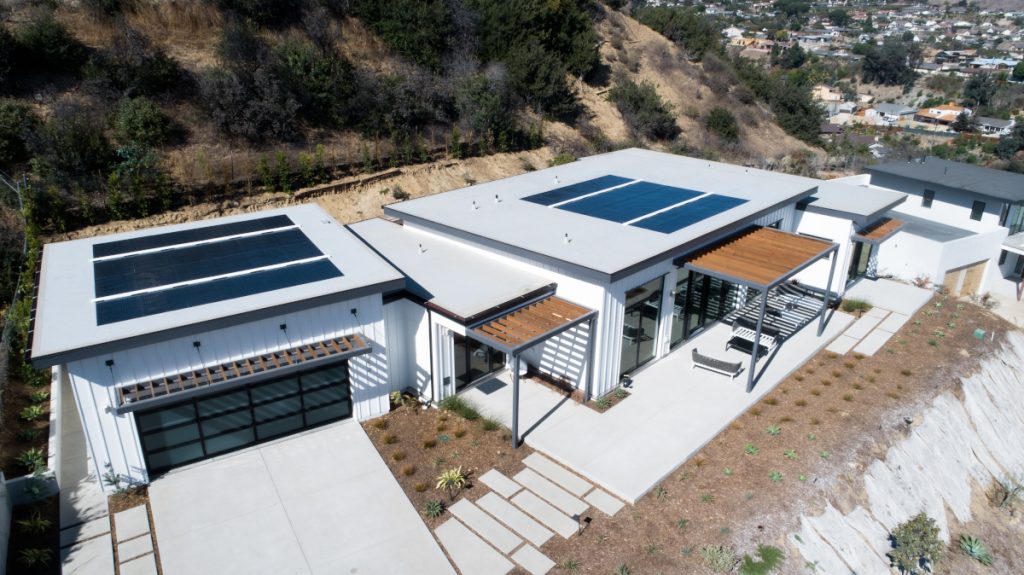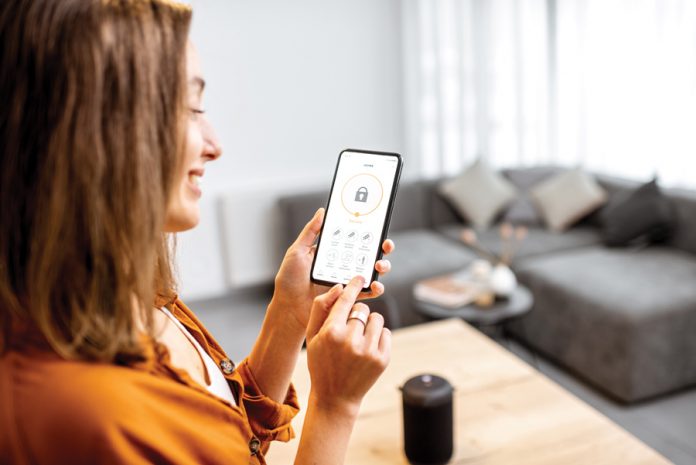At the onset of the pandemic, Fatima Dicko launched Sugar, an offering to automate home features and tasks. What already was strong demand for this service became a swift expansion as most Americans adjusted to full-time work/home life.

Dicko studied chemical engineering, went to the Stanford School of Business, and worked for Procter & Gamble prior to expanding her academic interest in technology into a full-time business.
“I’ve always been fascinated by this idea of taking existing technologies and combining them to make them better,” Dicko said.
As a student, she created a hyperlocal version of Craigslist for college campuses – ask for something you need in 15 minutes, and someone nearby who has what you need brings it to you.
“Campuses are kind of like these micro-communities, and if you could create these ways to connect, you can build this enhanced quality of experience,” she said. “If you were up late studying and needed an energy drink, someone is probably there to bring you one.”
Expanding the offering for metro centers is what Dicko was doing with Sugar at the time COVID-19 cases ramped up and people were asked to stay at home, often working and living in seclusion.
“I live in L.A. in a large apartment building in Koreatown,” Dicko said. “I realized I’d never connected with any of my neighbors and it really was like the college campus scenario.”
“One in four people continue to work remotely, and people are pretty lonely as well. What we decided to do is put a QR code in the building’s elevator, and within a few days we had half of the people in the building corresponding and finding ways to help each other and meet up safely,” she said.
They communicated through Sugar, a community engagement app, and a more interesting and interactive version of a web portal that allows residents to pay rent.
“If you partner the app and integrate it with smart hardware, such as a function that allows you to open your door on your phone, it’s going to get people into the app more often, increasing the level of engagement,” Dicko said. “And increased levels of resident engagement have been shown to create retention and successful referrals.”
Smart Homes and Communities, More Than Tech Tricks
What is a smart home?
While the technologies that drive a smart home continue to evolve, including the prevalence of 5G networks, features available on the market today already go well beyond what most consumers think of in terms of smart home features.

“More and more technologies are enabling microtasks in the home to become fully automated. Software is being designed to allow residents to manage everything from the washer and dryer to the blinds and lighting all from within a single app” Dicko said.
Often, consumer demand for new home tech features derives from people traveling for vacation or work. Travelers tend to have an increased level of forward-thinking, high-tech experiences.
“They come back from trips and want to have the same tech-forward experiences at home,” Dicko said.
Dicko said creating a great user experience in a smart home is much more than coming up with an app.
“It’s about enabling new interactions and experiences that drastically increase the ease and simplicity of daily tasks,” she said.
“Not only can I unlock the door on my app, but I also can send a digital key,” Dicko said. “It’s a one-time entry over SMS so residents can share with others after setting expiration dates.”
And, more than smart homes, advanced intelligent homes are on the horizon. As data collection turns into systems that operate on artificial intelligence, our homes and communities will become exponentially easier to use and healthier places to live, places that are continually informed and improved upon in real time by our behaviors.
“We’re closer to that than we realize. The prop-tech industry is very exciting right now,” Dicko said. “People are starting to ask questions about what tech they’re using, why they use it, and how helpful it is. There is more and more data coming out that millennials, for instance, will pay another $10 or $15 per month for more tech-forward amenitites. So, owners are beginning to see these offerings from a fiscal perspective.”
Defining a Smart Home

Matt Howland is the president of Dvele, a modular home builder that emphasizes technology-supported home conveniences and healthy living features. Dvele also is the developer of DveleIQ, a software platform creating more automated and user-friendly homes.
When asked about what a smart home is, Howland points to five levels of home technology, as well as a list of tasks those technologies can perform.
Five Features of a Smart Home from Dvele
- Manual switches and modern thermostats: This is where most of today’s homes exist – manual switches to turn on lights, an integrated thermostat for environmental controls, and enough “sensors” to meet building code; detect fire and poisonous carbon dioxide or carbon monoxide levels.
- Connected switches and devices: Many options from large scale builders fall into this category – lights and environmental controls that you can control from your phone via an app. This changes the human-home interface and allows remote control functionality but not much more. While helpful, it’s dated and will only become more obsolete as time passes.
- Integrated systems: Integrated systems allow multiple devices to work together from a common interface and with some coordination. With the rapid rise of voice assistants, we’re quickly seeing Level 2 homes migrate to Level 3 with the addition of an Alexa or Google Assistant in the home. These hubs allow for multiple connected devices to be integrated into scenes and controlled together, in addition to the obvious integration of home controls. Many of the 10K+ systems also fall into this level with the integration of high-end AV assets.
- Orchestrated systems: Orchestrated systems apply some level of “compute,” or the ability of a system to take multiple states of the home and change that environment based on a defined ruleset. This allows for an autonomous home functionality with the right programming. Think of an orchestrated home as a home powered by “if this then that” conditions. This has long been primarily done in hobbyist communities, but rarely makes its way into professional home automation solutions outside of some of the most expensive systems.
- Intelligent systems: Intelligent homes are self-learning systems optimizing the health of the occupants, the building, and the planet. In order to build a truly intelligent home, two things are necessary that are not yet prevalent in homebuilding. The first is additional sensors for understanding the state of the home and how changes impact its state. The second is an intelligent, learning private system that connects the various inputs and modifies how it behaves to achieve the optimal state, a system that learns over time and adapts to its owners and external environment, making the home a better home tomorrow. Another key feature of an intelligent home is that it is software-defined, enabling the home to be upgraded as technology and systems advance.
“We’re excited to announce DveleIQ, our contribution to improving the smart home world, or in this case the intelligent home,” Howland said. “We’ve designed a software-first platform to ensure the customer’s new home is better tomorrow than it is today.”
DveleIQ uses sensors to monitor and improve air quality, to create conveniences like providing the perfect water temperature for the homeowner at any given time, track sleep patterns to automatically adjust lighting and temperature, reduce energy costs, improve privacy, and maintain the best operating condition for residential systems.










